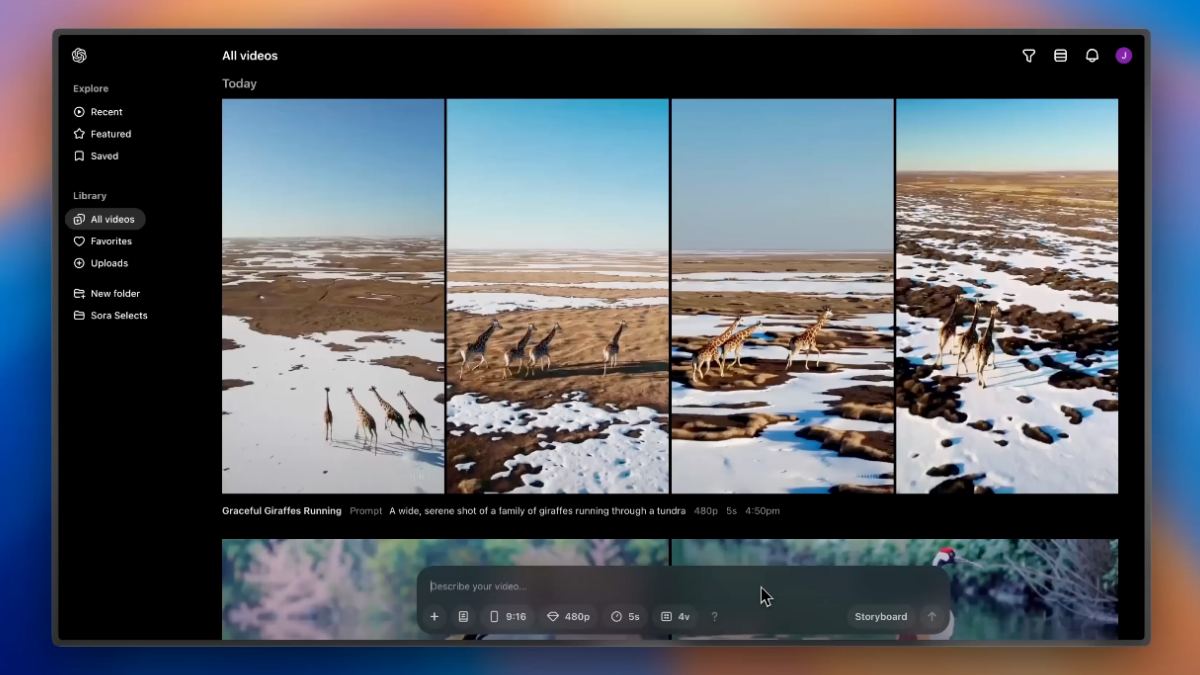OpenAI has taken part in the festivities with its “12 Days of Shipping” initiative where they’ve vouched to announce a new feature/ product everyday. As part of this, they have officially unveiled their highly anticipated text-to-video model, Sora. This rollout, which began with the release of the ChatGPT Pro subscription and the full launch of the o1 model, brings Sora to the public after months of exclusive previews and testing.
Initially previewed in February, Sora captured global attention with its ability to create videos from text prompts, images, and videos. Until now, access was limited to a select group of artists, filmmakers, and testers. The approach even came under scrutiny as some artists leaked the model on HuggingFace in protest at being treated as unpaid labour and free PR. With its public launch, OpenAI has released a new model, Sora Turbo, which is reportedly faster than the model initially previewed.
Sora enables users to generate videos featuring intricate scenes, multiple characters, and dynamic motions. OpenAI highlights the model’s nuanced understanding of prompts, emphasizing its grasp of real-world physical interactions and elements.
Currently, Sora is available to ChatGPT Plus and Pro subscribers in the U.S. and many other countries. However, stricter digital privacy laws in Europe and the UK have delayed its availability in those regions. OpenAI is trying to navigate these regulatory challenges to expand access in the future.
ChatGPT Plus ($20/month):
- Generate up to 50 priority videos (1,000 credits).
- Maximum video length: 5 seconds.
- Video resolution: 720p.
ChatGPT Pro ($200/month):
- Generate up to 500 priority videos (10,000 credits).
- Access to unlimited relaxed videos.
- Maximum video length: 20 seconds.
- Videos can be downloaded without watermarks.
- Higher video resolution options available.
OpenAI has hinted at plans to introduce flexible pricing tiers to cater to a broader range of users. Even if you don’t have a subscription, you can get a glimpse into Sora’s capabilities by exploring videos created by other users on Sora feed.
Sora boasts a variety of creative features, including:
- Remix: Modify specific parts of a video using text prompts.
- Recut: Extend isolated scenes within a video.
- Style Presets, Loop, and Blend: Tools for enhancing videos and seamlessly merging multiple clips.
- Storyboard: Generate sequential videos from a series of text prompts.
To ensure ethical usage, OpenAI has implemented several safeguards. Videos generated with Sora are watermarked (removable for Pro users) and embedded with C2PA metadata to trace their origin. Additionally, an internal search tool helps identify Sora-generated content, a measure aimed at combating misinformation, scams, and deepfakes.
Before uploading any images or videos, users must confirm they have the necessary rights and that their content adheres to OpenAI’s guidelines. This includes restrictions against featuring individuals under 18 and explicit or violent content. General uploads of human subjects will remain limited initially, with gradual expansion as OpenAI refines its deepfake mitigation strategies.
Sora can be through its website at sora.com. The tool gives users different options to tweak before sending their prompt, such as style presets, duration, resolution, aspect ratio, and more. It produces four variations of a given prompt.

Note: Due to overwhelming demand, account creation on Sora has temporarily been suspended, though. OpenAI is trying to fix the situation as soon as possible.
While Sora’s capabilities are impressive, it’s important to note that the model currently has limitations. It sometimes generates unrealistic outputs and struggles with complex actions in longer videos. Nevertheless, as the technology advances, Sora would only get better.
